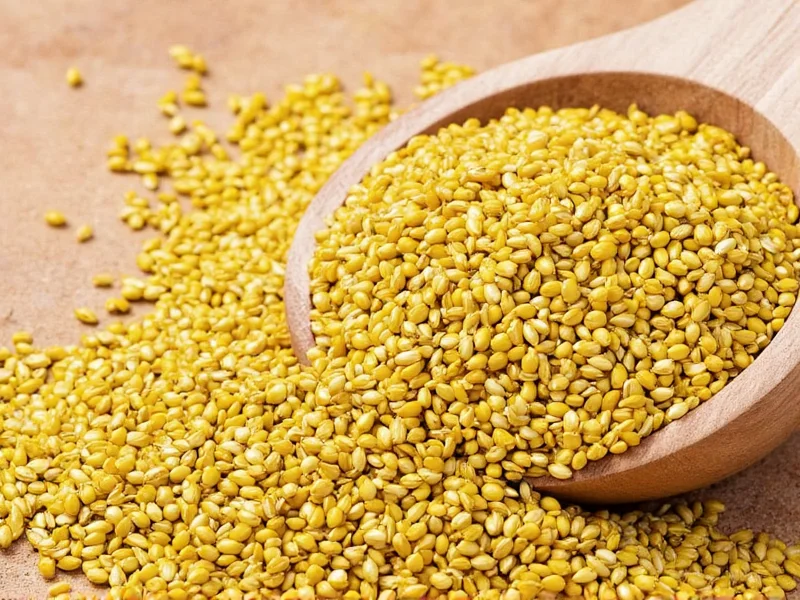Understanding Mustard Seed Varieties and Their Culinary Profiles
Before learning how to use mustard seeds, it's essential to recognize the three primary types available globally. Yellow mustard seeds (sinapis hirta) deliver the mildest flavor with subtle tanginess, making them ideal for American-style mustard and pickling solutions. Brown mustard seeds (brassica juncea), commonly used in Indian and Chinese cuisines, provide medium heat with earthy notes that intensify when cooked. Black mustard seeds (brassica nigra), the most pungent variety, offer complex nutty flavors with sharp heat that mellow beautifully during tempering.
Mastering Essential Preparation Techniques
Proper preparation unlocks mustard seeds' full potential while preventing unpleasant bitterness. The dry roasting method works well for spice blends: place seeds in a cool skillet, then heat over medium until they begin popping (approximately 30-60 seconds). Shake the pan constantly and remove seeds immediately when they turn golden brown. For tempering (tadka), heat 1-2 tablespoons oil until shimmering, add seeds, and cook until they pop and release aromatic oils—typically 20-45 seconds. Never leave seeds unattended as they burn quickly.
| Preparation Method | Ideal Oil Temperature | Optimal Cooking Time | Best Seed Variety |
|---|---|---|---|
| Dry Roasting | Cold pan to medium heat | 30-60 seconds | Yellow or Brown |
| Tempering (Tadka) | 350°F (shimmering) | 20-45 seconds | Brown or Black |
| Grinding for Pastes | N/A (dry or wet) | 1-2 minutes | Yellow or Brown |
| Soaking for Pickling | N/A (room temperature) | 24 hours | Yellow |
Regional Culinary Applications and Signature Dishes
Mustard seeds form the flavor foundation in numerous global cuisines. In Indian cooking, brown mustard seeds tempered in mustard oil create the base for Bengali shorshe ilish (hilsa fish in mustard sauce) and South Indian sambar. Southern US kitchens rely on yellow mustard seeds for classic bread-and-butter pickles and stone-ground mustard. Ethiopian berbere spice blends incorporate toasted mustard seeds alongside chili peppers and fenugreek. Japanese chefs use ground brown mustard seeds in karashi for dipping sauces and marinades. Each tradition demonstrates how to use mustard seeds to build complex flavor layers.
Advanced Usage Techniques for Home Cooks
For how to cook with mustard seeds beyond basic tempering, try these professional methods. Create infused oils by heating mustard seeds in neutral oil for 5 minutes, then straining and using the aromatic oil for dressings. Make whole-seed relishes by simmering seeds in vinegar with spices for 10 minutes—perfect with grilled meats. Incorporate dry-roasted seeds into homemade spice rubs for proteins, combining with coriander, cumin, and fennel. When making salad dressings, briefly toast seeds then blend with vinegar, honey, and olive oil for complex emulsions. For pickling, always use yellow seeds as their milder flavor won't overpower vegetables.
Storage Guidelines for Maximum Freshness and Flavor
Understanding how to store mustard seeds properly preserves their volatile oils and pungency. Keep whole seeds in airtight glass containers away from light and heat. Properly stored in a cool, dark pantry, they maintain peak quality for 2-3 years. Refrigeration extends shelf life to 4 years but may cause condensation issues. Never store near stoves or ovens as heat accelerates oil degradation. Ground mustard loses potency within 6 months, so always grind seeds fresh when possible. Check stored seeds by crushing one between fingers—fresh seeds should release strong aromatics.
Avoiding Common Preparation Mistakes
Many home cooks make critical errors when using mustard seeds that compromise flavor. The most frequent mistake involves overheating—burnt mustard seeds develop harsh bitterness that ruins entire dishes. Always use medium heat and remove seeds from oil immediately after popping. Another error is adding seeds to cold oil; they must hit shimmering oil for proper tempering. Some recipes incorrectly substitute ground mustard for whole seeds, which creates entirely different flavor profiles. When making pickles, avoid using brown or black seeds as their intense heat overwhelms delicate vegetables. Finally, never grind damp seeds as they form a paste rather than powder.
Creative Applications Beyond Traditional Cooking
Explore how to use mustard seeds in unexpected ways while maintaining culinary integrity. Create flavorful finishing salts by dry-roasting seeds with coarse salt and grinding together. Incorporate toasted seeds into bread doughs and crackers for nutty crunch. Make infused vinegars by steeping seeds in warm vinegar for 24 hours, then straining for salad dressings. For vegan cooking, blend soaked mustard seeds with water to create dairy-free cheese alternatives. Some traditional medicine systems use mustard seed poultices, though culinary applications remain their primary value. Remember that mustard seeds naturally contain compounds that enhance flavor perception in other ingredients.











 浙公网安备
33010002000092号
浙公网安备
33010002000092号 浙B2-20120091-4
浙B2-20120091-4